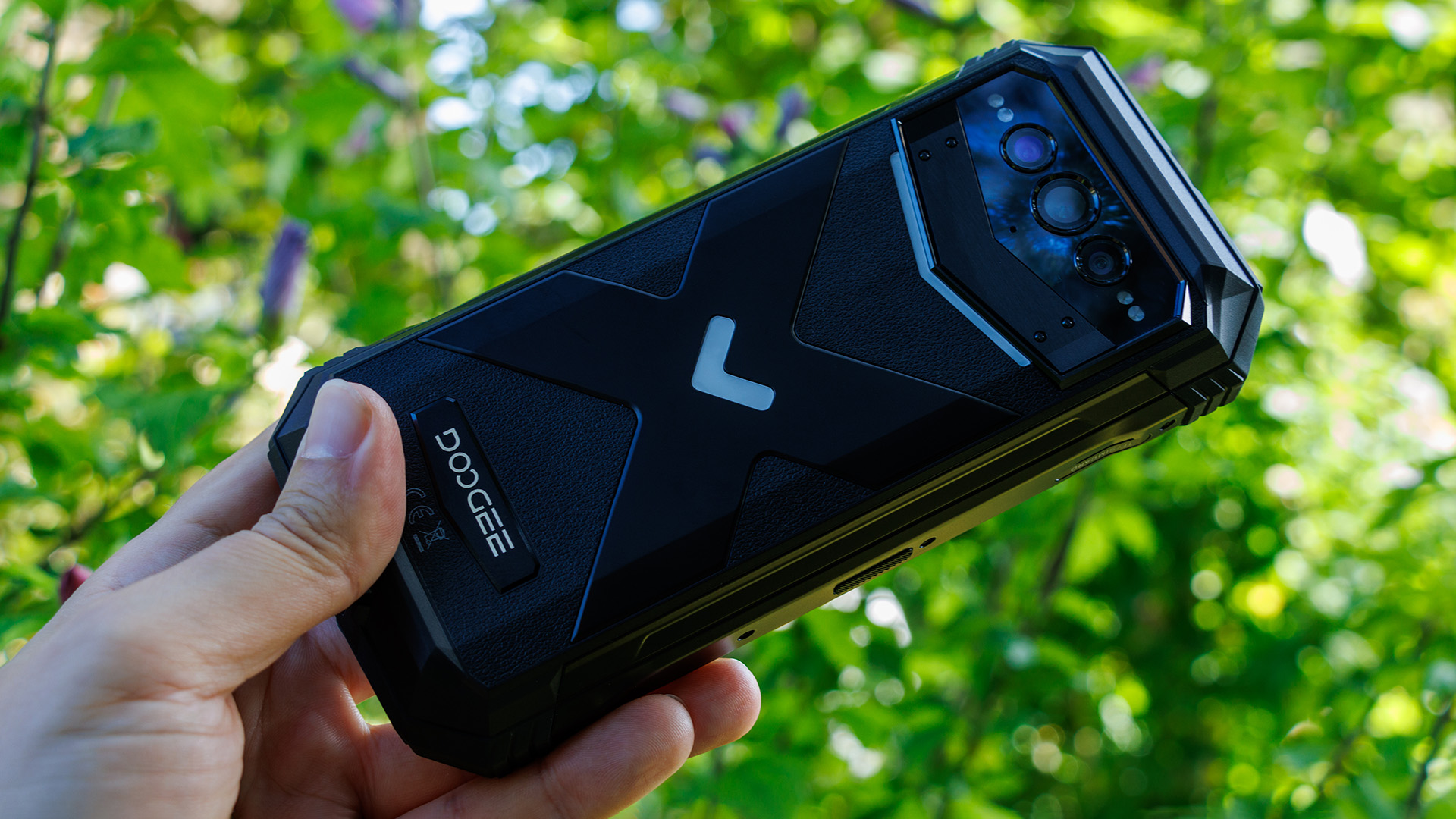
Avaliação do Doogee V Max Plus - Smartphone robusto com bateria monstruosa
Um quilo de smartphone, por favor!
O Doogee V Max Plus certamente não é um smartphone de bolso, mas pretende marcar pontos com sua bateria de 22.000 mA e design robusto. Ele também oferece uma câmera tripla com 200 MPix e visão noturna, muita memória e uma tela IPS de 120 Hz. Leia o teste para descobrir se isso é suficiente para convencer.Daniel Schmidt, 👁 Daniel Schmidt (traduzido por DeepL / Ninh Duy) Publicado 🇺🇸 🇩🇪 ...
O Doogee V Max Plus é uma verdadeira fera, especialmente graças ao seu design robusto e à bateria integrada de 22.000 mAh. O smartphone robusto é alimentado por uma Dimensity 7050 com 16 GB de RAM e 512 GB de memória, sendo que esta última também pode ser expandida usando um cartão microSD.
Nosso teste esclarece se as qualidades do telefone Doogee são suficientes para criar uma nova classe de peso e o que mais ele oferece.
Possíveis concorrentes em comparação
Avaliação | Versão | Data | Modelo | Peso | Unidade | Size | Resolução | Preço |
|---|---|---|---|---|---|---|---|---|
| 73.3 % | v8 | 08/2024 | Doogee V Max Plus Dimensity 7050, Mali-G68 MP4 | 539 g | 512 GB UFS 2.2 Flash | 6.58" | 2408x1080 | |
| 79.6 % v7 (old) | v7 (old) | 06/2024 | Oukitel WP35 Dimensity 6100+, Mali-G57 MP2 | 360 g | 256 GB eMMC 5.1 Flash | 6.60" | 2408x1080 | |
| 79.1 % v7 (old) | v7 (old) | 04/2024 | Cubot KingKong AX Helio G99, Mali-G57 MP2 | 296 g | 256 GB UFS 3.0 Flash | 6.58" | 2408x1080 | |
| 79.1 % v7 (old) | v7 (old) | 03/2024 | Samsung Galaxy XCover 7 Dimensity 6100+, Mali-G57 MP2 | 240 g | 128 GB UFS 2.1 Flash | 6.60" | 2408x1080 |
Os Top 10
» Os Top 10 Portáteis Multimídia
» Os Top 10 Portáteis de Jogos
» Os Top 10 Portáteis Leves para Jogos
» Os Top 10 Portáteis Acessíveis de Escritório/Empresariais
» Os Top 10 Portáteis Premium de Escritório/Empresariais
» Os Top 10 dos Portáteis Workstation
» Os Top 10 Subportáteis
» Os Top 10 Ultrabooks
» Os Top 10 Conversíveis
» Os Top 10 Tablets
» Os Top 10 Smartphones
» A melhores Telas de Portáteis Analisadas Pela Notebookcheck
» Top 10 dos portáteis abaixo dos 500 Euros da Notebookcheck
» Top 10 dos Portáteis abaixo dos 300 Euros
Observação: Atualizamos nosso sistema de classificação e os resultados da versão 8 não são comparáveis aos resultados da versão 7 , disponíveis aqui.
Caixa - O V Max Plus tem certificação IP69K e MIL-STD-810H
O Doogee V Max Plus é um verdadeiro peso pesado e pesa impressionantes 539 gramas. O smartphone robusto também é muito espesso, com mais de 26 milímetros. Por outro lado, ele é muito robusto e tem um espesso revestimento protetor. Ele é à prova de poeira e à prova d'água, de acordo com a certificação IP68. Com a certificação IP69K, ele vai um passo além e também deve ser protegido contra limpeza com jatos de alta pressão/vapor.
O smartphone Doogge também passou nos testes de acordo com o padrão MIL-STD-810H. Isso inclui testes contra quedas, bem como proteção contra poeira, água, névoa e umidade. No entanto, o fabricante não entra em detalhes a esse respeito.
O acabamento é bom e deixa uma impressão sólida. No entanto, o plástico em forma de X na parte traseira não é de alta qualidade e rapidamente fica sujo. A parte frontal é protegida pelo Corning Gorilla Glass Victus.
Praticidade: O V Max Plus não precisa de uma ferramenta SIM, pois o slot de cartão pode ser aberto com os dedos. É um slot híbrido que oferece espaço para dois nano-SIMs ou, em vez do segundo SIM, para um cartão microSD.
Recursos - Smartphone Doogee com rádio e LED grande
O Doogee V Max Plus oferece uma porta USB 2.0 como interface física, que tem o desempenho esperado no teste de cópia com 38,68 MB/s e suporta OTG. O receptor de rádio FM deve usar os fones de ouvido conectados como antena. No entanto, o teste revelou problemas nesse sentido. Embora os fones de ouvido USB conectados sejam reconhecidos e também funcionem, o aplicativo de rádio não os reconhece como uma antena e, por isso, o smartphone não recebe nenhuma estação.
A parte superior dos dois LEDs em forma de V na parte traseira pode se acender para mensagens e chamadas recebidas. Ele também pulsa ritmicamente durante a reprodução de música. O LED inferior, por outro lado, só fica ativo quando o smartphone está carregando.
Há também um botão configurável no lado esquerdo.
leitor de cartão microSD
O leitor de cartão microSD é compatível com cartões de memória de até 2 TB, mas não com o formato exFAT. No teste de cópia com nosso cartão de memória de referência Angelbird AV Pro V60, as taxas de transferência são lentas, com 9,82 MB/s.
| SD Card Reader - average JPG Copy Test (av. of 3 runs) | |
| Oukitel WP35 (Angelbird V60) | |
| Cubot KingKong AX (Angelbird V60) | |
| Samsung Galaxy XCover 7 (Angelbird V60) | |
| Doogee V Max Plus (Angelbird AV Pro V60) | |
Cross Platform Disk Test (CPDT)
Software - Android 14 para o smartphone Doogee
Sustentabilidade
Embora o Doogee V Max Plus venha em uma embalagem de papelão, ele é totalmente embrulhado em filme plástico. A inserção na caixa é feita de plástico e o smartphone e a fonte de alimentação também são embalados em plástico.
A Doogee não fornece nenhuma informação sobre o uso de materiais reciclados ou sobre a pegada de CO2 . As instruções de reparo não estão oficialmente disponíveis, nem as peças de reposição adequadas.
O comprador de um V Max Plus não deve esperar uma atualização importante, pois a Doogee só oferece uma garantia de atualização por seis meses.
Comunicação e GNSS - O Doogee V Max Plus oferece 5G e Wi-Fi 6
O Doogee V Max Plus suporta todos os padrões comuns de comunicação móvel, incluindo 5G. O equipamento de frequência é decente e não houve problemas de recepção no ambiente urbano.
O módulo Wi-Fi suporta Wi-Fi 6 (IEEE 802.11 ax) e, em combinação com nosso roteador de referência Asus ROG Rapture GT-AXE11000, oferece taxas de transferência atraentes e estáveis.
| Networking | |
| Doogee V Max Plus | |
| iperf3 receive AXE11000 | |
| iperf3 transmit AXE11000 | |
| Oukitel WP35 | |
| iperf3 receive AXE11000 | |
| iperf3 transmit AXE11000 | |
| Cubot KingKong AX | |
| iperf3 receive AXE11000 | |
| iperf3 transmit AXE11000 | |
| Samsung Galaxy XCover 7 | |
| iperf3 receive AXE11000 | |
| iperf3 transmit AXE11000 | |
| Média da turma Smartphone | |
| iperf3 receive AXE11000 | |
| iperf3 transmit AXE11000 | |
O Doogee V Max Plus fixa o satélite com muita rapidez e precisão. Em ambientes internos, o sinal demora um pouco para se fixar na sua posição, mas também é preciso.
Em um passeio de bicicleta, comparamos o smartphone robusto com um Garmin Venu 2, onde o smartwatch fitness é um pouco mais preciso, mas o V Max Plus também rastreia bem a rota.
Funções do telefone e qualidade de voz
O Doogee V Max Plus suporta dual SIM (SIM híbrido, até dois nano-SIMs), mas sem suporte para eSIM. Funções como VoLTE e telefonia Wi-Fi estão disponíveis.
A qualidade da voz é um pouco abafada, mas o usuário do smartphone da Doogee continua sendo fácil de entender em ambientes silenciosos. Não há supressão perceptível do ruído ambiente alto.
Câmeras - V Max Plus com 200 MP e visão noturna
A câmera frontal do Doogee V Max Plus oferece nominalmente 32 MP, mas usa pixel binning para que as imagens finais tenham 8 MPix. No entanto, a resolução total também pode ser usada. Os vídeos podem ser gravados em Full HD (30 FPS). A qualidade é boa, mas falta um pouco em termos de dinâmica e nitidez.
A câmera principal na parte traseira é composta por três lentes. A câmera principal tem uma resolução de 200 MP, mas não possui estabilização óptica de imagem (OIS). A qualidade das fotos é satisfatória, mas há um pouco de reflexo vermelho e as áreas claras tendem a ficar superexpostas. O binning de pixels também é usado aqui (a resolução de imagem resultante é de 12 MP).
Uma câmera de visão noturna com 20 MPix também está integrada. Como era de se esperar, ela ainda oferece boas imagens em preto e branco no escuro, mas tem problemas para ajustar o foco automático com rapidez suficiente com objetos em movimento ou próximos.
A lente ultra grande angular também é capaz de tirar fotos macro. A combinação de ambas as funções em uma única lente é uma boa ideia, mas, infelizmente, a qualidade é bastante ruim.
Os vídeos são gravados em Ultra HD (30 FPS), na melhor das hipóteses. Em suma, o V Max Plus não é uma câmera de ponta, mas é a melhor em sua categoria de dispositivo.
Comparação de imagens
Escolha uma cena e navegue pela primeira imagem. Um clique muda a posição nas telas sensíveis ao toque. Um clique na imagem ampliada abre o original em uma nova janela. A primeira imagem mostra a fotografia em escala do dispositivo de teste.
Main cameraMain cameraUltra wide-anglel5x ZoomLow-Light

Acessórios e garantia - Unidade de fonte de alimentação incluída
O Doogee V Max Plus vem com um cabo USB (Type-C), um adaptador de energia modular de 33 watts, um protetor de tela adicional e um guia de início rápido.
A garantia é de 12 meses e não pode ser estendida. Isso não afeta a Garantia.
Dispositivos de entrada e operação - Modo subaquático no V Max Plus
A tela touchscreen capacitiva do Doogee V Max Plus também é protegida por um protetor de tela ex-works. As propriedades de deslizamento do Gorilla Glass por baixo são boas e as entradas geralmente são implementadas rapidamente.
Um modo especial está disponível para fotos subaquáticas para que a câmera possa ser usada sem restrições. A tela sensível ao toque é bloqueada, o botão de aumentar o volume serve como disparador do obturador, o botão de diminuir o volume pode ser usado para alternar entre as funções de foto e vídeo e o botão liga/desliga encerra o modo novamente.
O botão de função configurável no lado esquerdo, chamado de "função de tecla lateral", pode ser configurado nas definições. Até três comandos diferentes podem ser atribuídos a ele.
A segurança biométrica é fornecida pelo sensor de impressão digital capacitivo no botão liga/desliga, que funciona de forma confiável e desbloqueia o smartphone em uma velocidade atraente. Além disso, ou como alternativa, o reconhecimento facial menos seguro pode ser usado por meio da câmera frontal.
O motor de vibração ERM não é muito esponjoso e é muito silencioso, mas poderia ser um pouco mais potente.
Tela - Painel IPS de alto contraste com 120 Hz
A tela IPS do Doogee V Max Plus opera em até 120 Hz, mas a taxa de atualização deve ser definida manualmente. Além do modo de 120 Hz, também é possível usar 90 ou 60 Hz. O HDR é nominalmente suportado, mas o smartphone robusto não é certificado por DRM.
A Doogee especifica o brilho em 480 nits; medimos 552 cd/m² no centro da tela com iluminação uniforme. As diferenças são quase imperceptíveis se o sensor de luz ambiente estiver ativo: medimos 547 cd/m² com o controle de brilho manual e 539 cd/m² no teste APL18. O nível de preto também é agradavelmente baixo e garante contrastes nítidos (APL18 - 2156:1).
| |||||||||||||||||||||||||
iluminação: 90 %
iluminação com acumulador: 552 cd/m²
Contraste: 2400:1 (Preto: 0.23 cd/m²)
ΔE Color 6.7 | 0.5-29.43 Ø4.87
ΔE Greyscale 14 | 0.5-98 Ø5.1
95.3% sRGB (Calman 2D)
Gamma: 0.27
| Doogee V Max Plus IPS, 2408x1080, 6.6" | Oukitel WP35 IPS, 2408x1080, 6.6" | Cubot KingKong AX IPS, 2408x1080, 6.6" | Samsung Galaxy XCover 7 PLS, 2408x1080, 6.6" | |
|---|---|---|---|---|
| Screen | -14% | -15% | -10% | |
| Brightness middle | 552 | 552 0% | 553 0% | 600 9% |
| Brightness | 539 | 549 2% | 521 -3% | 561 4% |
| Brightness Distribution | 90 | 94 4% | 86 -4% | 89 -1% |
| Black Level * | 0.23 | 0.42 -83% | 0.5 -117% | 0.57 -148% |
| Contrast | 2400 | 1314 -45% | 1106 -54% | 1053 -56% |
| Colorchecker dE 2000 * | 6.7 | 7.22 -8% | 7.18 -7% | 5.07 24% |
| Colorchecker dE 2000 max. * | 12.1 | 13.09 -8% | 10.23 15% | 8.1 33% |
| Greyscale dE 2000 * | 14 | 10.1 28% | 7.1 49% | 5.7 59% |
| Gamma | 0.27 815% | 1.785 123% | 2.291 96% | 2.249 98% |
| CCT | 7499 87% | 9036 72% | 8964 73% | 8162 80% |
* ... menor é melhor
Cintilação da tela / PWM (modulação por largura de pulso)
| Tela tremeluzindo / PWM não detectado | |||
[pwm_comparison] Em comparação: 53 % de todos os dispositivos testados não usam PWM para escurecer a tela. Se PWM foi detectado, uma média de 8516 (mínimo: 5 - máximo: 343500) Hz foi medida. | |||
O smartphone Doogee é fraco quando se trata de exibir com precisão a escala de cinza e as cores na tela. No entanto, isso não é perceptível no uso diário.
Exibir tempos de resposta
| ↔ Tempo de resposta preto para branco | ||
|---|---|---|
| 26.68 ms ... ascensão ↗ e queda ↘ combinadas | ↗ 10.79 ms ascensão | |
| ↘ 15.89 ms queda | ||
| A tela mostra taxas de resposta relativamente lentas em nossos testes e pode ser muito lenta para os jogadores. Em comparação, todos os dispositivos testados variam de 0.1 (mínimo) a 240 (máximo) ms. » 64 % de todos os dispositivos são melhores. Isso significa que o tempo de resposta medido é pior que a média de todos os dispositivos testados (20.8 ms). | ||
| ↔ Tempo de resposta 50% cinza a 80% cinza | ||
| 44.47 ms ... ascensão ↗ e queda ↘ combinadas | ↗ 19.33 ms ascensão | |
| ↘ 25.14 ms queda | ||
| A tela mostra taxas de resposta lentas em nossos testes e será insatisfatória para os jogadores. Em comparação, todos os dispositivos testados variam de 0.165 (mínimo) a 636 (máximo) ms. » 74 % de todos os dispositivos são melhores. Isso significa que o tempo de resposta medido é pior que a média de todos os dispositivos testados (32.5 ms). | ||
O Doogee V Max Plus continua sendo muito fácil de ler em ambientes externos na maioria das situações de luz. Só se torna difícil sob o sol escaldante.
A estabilidade do ângulo de visão da tela IPS é boa. O brilho diminui visivelmente em ângulos de visão planos e um leve efeito de brilho pode ser visto em um fundo preto.
Desempenho - A Doogee conta com o Dimensity 7050
O Doogee V Max Plus oferece apenas 16 GB de RAM e 512 GB de memória interna. O SoC é um MediaTek Dimensity 7050que é uma versão melhorada do Dimensity 900.
O smartphone robusto oferece um bom desempenho do sistema no campo de comparação, o que também é confirmado subjetivamente.
| Antutu v10 - Total Score | |
| Média da turma Smartphone (142748 - 3015111, n=132, últimos 2 anos) | |
| Doogee V Max Plus | |
| Média MediaTek Dimensity 7050 (503958 - 604738, n=2) | |
| Lenovo Tab P12 Paper | |
| CrossMark - Overall | |
| Média da turma Smartphone (187 - 2674, n=164, últimos 2 anos) | |
| Doogee V Max Plus | |
| Lenovo Tab P12 Paper | |
| Média MediaTek Dimensity 7050 (575 - 706, n=4) | |
| Samsung Galaxy XCover 7 | |
| UL Procyon AI Inference for Android - Overall Score NNAPI | |
| Doogee V Max Plus | |
| Média da turma Smartphone (1267 - 81594, n=153, últimos 2 anos) | |
| Média MediaTek Dimensity 7050 (5266 - 23122, n=4) | |
| Samsung Galaxy XCover 7 | |
| Lenovo Tab P12 Paper | |
| AImark - Score v3.x | |
| Média da turma Smartphone (82 - 307528, n=141, últimos 2 anos) | |
| Doogee V Max Plus | |
| Média MediaTek Dimensity 7050 (456 - 9646, n=4) | |
| Samsung Galaxy XCover 7 | |
| Lenovo Tab P12 Paper | |
A unidade gráfica é o processador integrado ARM Mali-G68 MP4que está posicionada na faixa média inferior. Ela não suporta ray tracing, mas oferece um desempenho sólido.
GFXBench (DX / GLBenchmark) 2.7: T-Rex Onscreen | 1920x1080 T-Rex Offscreen
GFXBench 3.0: on screen Manhattan Onscreen OGL | 1920x1080 1080p Manhattan Offscreen
GFXBench 3.1: on screen Manhattan ES 3.1 Onscreen | 1920x1080 Manhattan ES 3.1 Offscreen
GFXBench: on screen Car Chase Onscreen | 1920x1080 Car Chase Offscreen | on screen Aztec Ruins High Tier Onscreen | 2560x1440 Aztec Ruins High Tier Offscreen | on screen Aztec Ruins Normal Tier Onscreen | 1920x1080 Aztec Ruins Normal Tier Offscreen | 3840x2160 4K Aztec Ruins High Tier Offscreen
| 3DMark / Steel Nomad Light Unlimited Score | |
| Lenovo Tab P12 Paper | |
| Doogee V Max Plus | |
| 3DMark / Steel Nomad Light Score | |
| Lenovo Tab P12 Paper | |
| Doogee V Max Plus | |
| 3DMark / Wild Life Extreme Unlimited | |
| Lenovo Tab P12 Paper | |
| Doogee V Max Plus | |
| Cubot KingKong AX | |
| Samsung Galaxy XCover 7 | |
| Oukitel WP35 | |
| 3DMark / Wild Life Extreme | |
| Lenovo Tab P12 Paper | |
| Doogee V Max Plus | |
| Cubot KingKong AX | |
| Samsung Galaxy XCover 7 | |
| Oukitel WP35 | |
| 3DMark / Wild Life Unlimited Score | |
| Lenovo Tab P12 Paper | |
| Doogee V Max Plus | |
| Cubot KingKong AX | |
| Samsung Galaxy XCover 7 | |
| Oukitel WP35 | |
| 3DMark / Wild Life Score | |
| Doogee V Max Plus | |
| Lenovo Tab P12 Paper | |
| Samsung Galaxy XCover 7 | |
| Oukitel WP35 | |
| Cubot KingKong AX | |
| 3DMark / Sling Shot Extreme (ES 3.1) Unlimited Physics | |
| Lenovo Tab P12 Paper | |
| Doogee V Max Plus | |
| Cubot KingKong AX | |
| Oukitel WP35 | |
| Samsung Galaxy XCover 7 | |
| 3DMark / Sling Shot Extreme (ES 3.1) Unlimited Graphics | |
| Doogee V Max Plus | |
| Lenovo Tab P12 Paper | |
| Cubot KingKong AX | |
| Samsung Galaxy XCover 7 | |
| Oukitel WP35 | |
| 3DMark / Sling Shot Extreme (ES 3.1) Unlimited | |
| Doogee V Max Plus | |
| Lenovo Tab P12 Paper | |
| Cubot KingKong AX | |
| Samsung Galaxy XCover 7 | |
| Oukitel WP35 | |
| GFXBench (DX / GLBenchmark) 2.7 / T-Rex Onscreen | |
| Doogee V Max Plus | |
| Lenovo Tab P12 Paper | |
| Samsung Galaxy XCover 7 | |
| GFXBench (DX / GLBenchmark) 2.7 / T-Rex Offscreen | |
| Doogee V Max Plus | |
| Lenovo Tab P12 Paper | |
| Samsung Galaxy XCover 7 | |
| GFXBench 3.0 / Manhattan Onscreen OGL | |
| Doogee V Max Plus | |
| Samsung Galaxy XCover 7 | |
| Lenovo Tab P12 Paper | |
| GFXBench 3.0 / 1080p Manhattan Offscreen | |
| Doogee V Max Plus | |
| Lenovo Tab P12 Paper | |
| Samsung Galaxy XCover 7 | |
| GFXBench 3.1 / Manhattan ES 3.1 Onscreen | |
| Doogee V Max Plus | |
| Samsung Galaxy XCover 7 | |
| Lenovo Tab P12 Paper | |
| GFXBench 3.1 / Manhattan ES 3.1 Offscreen | |
| Lenovo Tab P12 Paper | |
| Doogee V Max Plus | |
| Samsung Galaxy XCover 7 | |
| GFXBench / Car Chase Onscreen | |
| Doogee V Max Plus | |
| Samsung Galaxy XCover 7 | |
| Lenovo Tab P12 Paper | |
| GFXBench / Car Chase Offscreen | |
| Lenovo Tab P12 Paper | |
| Doogee V Max Plus | |
| Samsung Galaxy XCover 7 | |
| GFXBench / Aztec Ruins High Tier Onscreen | |
| Doogee V Max Plus | |
| Cubot KingKong AX | |
| Samsung Galaxy XCover 7 | |
| Oukitel WP35 | |
| Lenovo Tab P12 Paper | |
| GFXBench / Aztec Ruins High Tier Offscreen | |
| Lenovo Tab P12 Paper | |
| Doogee V Max Plus | |
| Cubot KingKong AX | |
| Samsung Galaxy XCover 7 | |
| Oukitel WP35 | |
| GFXBench / Aztec Ruins Normal Tier Onscreen | |
| Doogee V Max Plus | |
| Cubot KingKong AX | |
| Samsung Galaxy XCover 7 | |
| Oukitel WP35 | |
| Lenovo Tab P12 Paper | |
| GFXBench / Aztec Ruins Normal Tier Offscreen | |
| Lenovo Tab P12 Paper | |
| Doogee V Max Plus | |
| Cubot KingKong AX | |
| Samsung Galaxy XCover 7 | |
| Oukitel WP35 | |
| GFXBench / 4K Aztec Ruins High Tier Offscreen | |
| Lenovo Tab P12 Paper | |
| Doogee V Max Plus | |
| Cubot KingKong AX | |
| Samsung Galaxy XCover 7 | |
| Oukitel WP35 | |
| Jetstream 2 - 2.0 Total Score | |
| Média da turma Smartphone (13.8 - 387, n=171, últimos 2 anos) | |
| Média MediaTek Dimensity 7050 (75.9 - 108.8, n=4) | |
| Doogee V Max Plus (Chrome 127) | |
| Samsung Galaxy XCover 7 (Chrome 122) | |
| Speedometer 2.0 - Result | |
| Média da turma Smartphone (15.2 - 569, n=151, últimos 2 anos) | |
| Doogee V Max Plus (Chrome 127) | |
| Média MediaTek Dimensity 7050 (77.5 - 100, n=4) | |
| Samsung Galaxy XCover 7 (Chrome 122) | |
| WebXPRT 4 - Overall | |
| Média da turma Smartphone (22 - 271, n=162, últimos 2 anos) | |
| Doogee V Max Plus (Chrome 127) | |
| Média MediaTek Dimensity 7050 (66 - 107, n=4) | |
| Samsung Galaxy XCover 7 (Chrome 122) | |
| Octane V2 - Total Score | |
| Média da turma Smartphone (2228 - 100368, n=210, últimos 2 anos) | |
| Doogee V Max Plus (Chrome 127) | |
| Média MediaTek Dimensity 7050 (31245 - 37214, n=5) | |
| Cubot KingKong AX (Chrome 122) | |
| Oukitel WP35 (Chrome 124) | |
| Samsung Galaxy XCover 7 (Chrome 122) | |
| Mozilla Kraken 1.1 - Total | |
| Samsung Galaxy XCover 7 (Chrome 122) | |
| Doogee V Max Plus (Chrome 127) | |
| Média MediaTek Dimensity 7050 (1264 - 1656, n=4) | |
| Média da turma Smartphone (277 - 28190, n=171, últimos 2 anos) | |
* ... menor é melhor
| Doogee V Max Plus | Oukitel WP35 | Cubot KingKong AX | Samsung Galaxy XCover 7 | Média 512 GB UFS 2.2 Flash | Média da turma Smartphone | |
|---|---|---|---|---|---|---|
| AndroBench 3-5 | -86% | -23% | -37% | -18% | 18% | |
| Sequential Read 256KB | 1860.16 | 292 -84% | 1000.7 -46% | 488.2 -74% | 1033 ? -44% | 2030 ? 9% |
| Sequential Write 256KB | 1611.59 | 149.5 -91% | 915.2 -43% | 501 -69% | 950 ? -41% | 1646 ? 2% |
| Random Read 4KB | 239.64 | 61.7 -74% | 230.6 -4% | 212 -12% | 232 ? -3% | 282 ? 18% |
| Random Write 4KB | 225.34 | 9.4 -96% | 233.2 3% | 240.2 7% | 259 ? 15% | 325 ? 44% |
Emissões - Desempenho estável
Temperatura
As temperaturas da superfície só ultrapassam a marca de 37 graus em alguns pontos da parte frontal, mesmo sob carga constante.
O SoC também não se impressiona com os testes de estresse do 3DMark e não sofre nenhuma perda.
(+) A temperatura máxima no lado superior é 37.4 °C / 99 F, em comparação com a média de 35.1 °C / 95 F , variando de 21.9 a 63.7 °C para a classe Smartphone.
(+) A parte inferior aquece até um máximo de 32.3 °C / 90 F, em comparação com a média de 33.9 °C / 93 F
(+) Em uso inativo, a temperatura média para o lado superior é 31.1 °C / 88 F, em comparação com a média do dispositivo de 32.8 °C / ### class_avg_f### F.
3DMark Steel Nomad Stress Test
| 3DMark | |
| Wild Life Stress Test Stability | |
| Samsung Galaxy XCover 7 | |
| Oukitel WP35 | |
| Doogee V Max Plus | |
| Cubot KingKong AX | |
| Wild Life Extreme Stress Test | |
| Doogee V Max Plus | |
| Samsung Galaxy XCover 7 | |
| Cubot KingKong AX | |
| Oukitel WP35 | |
| Steel Nomad Light Stress Test Stability | |
| Doogee V Max Plus | |
Alto-falante
Os alto-falantes frontais estão bem alinhados e podem ficar muito altos, mas oferecem um som muito dominante nos agudos, que soa metálico e apertado e distorce audivelmente mesmo em volume médio.
A Doogee não fornece nenhuma informação sobre os codecs de áudio suportados para o Bluetooth. Infelizmente, eles também não podem ser lidos.
Doogee V Max Plus análise de áudio
(+) | os alto-falantes podem tocar relativamente alto (###valor### dB)
Graves 100 - 315Hz
(-) | quase nenhum baixo - em média 17.9% menor que a mediana
(+) | o baixo é linear (2.8% delta para a frequência anterior)
Médios 400 - 2.000 Hz
(±) | médios mais altos - em média 6.4% maior que a mediana
(+) | médios são lineares (4.8% delta para frequência anterior)
Altos 2 - 16 kHz
(±) | máximos mais altos - em média 6.9% maior que a mediana
(+) | os máximos são lineares (4.7% delta da frequência anterior)
Geral 100 - 16.000 Hz
(±) | a linearidade do som geral é média (18.3% diferença em relação à mediana)
Comparado com a mesma classe
» 16% de todos os dispositivos testados nesta classe foram melhores, 8% semelhantes, 75% piores
» O melhor teve um delta de 12%, a média foi 36%, o pior foi 134%
Comparado com todos os dispositivos testados
» 37% de todos os dispositivos testados foram melhores, 7% semelhantes, 55% piores
» O melhor teve um delta de 4%, a média foi 24%, o pior foi 134%
Samsung Galaxy XCover 7 análise de áudio
(+) | os alto-falantes podem tocar relativamente alto (###valor### dB)
Graves 100 - 315Hz
(-) | quase nenhum baixo - em média 25.6% menor que a mediana
(±) | a linearidade dos graves é média (10.8% delta para a frequência anterior)
Médios 400 - 2.000 Hz
(±) | médios mais altos - em média 6.3% maior que a mediana
(±) | a linearidade dos médios é média (7% delta para frequência anterior)
Altos 2 - 16 kHz
(±) | máximos mais altos - em média 5.4% maior que a mediana
(+) | os máximos são lineares (6.1% delta da frequência anterior)
Geral 100 - 16.000 Hz
(±) | a linearidade do som geral é média (20.9% diferença em relação à mediana)
Comparado com a mesma classe
» 35% de todos os dispositivos testados nesta classe foram melhores, 8% semelhantes, 56% piores
» O melhor teve um delta de 12%, a média foi 36%, o pior foi 134%
Comparado com todos os dispositivos testados
» 54% de todos os dispositivos testados foram melhores, 8% semelhantes, 38% piores
» O melhor teve um delta de 4%, a média foi 24%, o pior foi 134%
Duração da bateria - Melhor desempenho em nosso banco de dados
Consumo de energia
O consumo de energia do Doogee V Max Plus é maior em nossas medições, mas isso se deve principalmente ao painel.
O smartphone é carregado com um máximo de 33 watts. No entanto, uma carga completa leva quatro horas e 20 minutos. A marca de 50% é atingida após 96 minutos e 80% após 172 minutos.
| desligado | |
| Ocioso | |
| Carga |
|
Key:
min: | |
| Doogee V Max Plus 22000 mAh | Samsung Galaxy XCover 7 4050 mAh | Média MediaTek Dimensity 7050 | Média da turma Smartphone | |
|---|---|---|---|---|
| Power Consumption | 51% | -22% | 19% | |
| Idle Minimum * | 1.65 | 1 39% | 1.487 ? 10% | 0.872 ? 47% |
| Idle Average * | 2.66 | 1.2 55% | 3.97 ? -49% | 1.438 ? 46% |
| Idle Maximum * | 2.76 | 1.3 53% | 4.19 ? -52% | 1.582 ? 43% |
| Load Average * | 4.89 | 2.3 53% | 6.36 ? -30% | 6.99 ? -43% |
| Load Maximum * | 10.5 | 4.5 57% | 9.4 ? 10% | 10.4 ? 1% |
* ... menor é melhor
Power consumption: Geekbench (150 cd/m²)
Power consumption: GFXBench (150 cd/m²)
Duração da bateria
Medimos o tempo de duração da bateria do Doogee V Max Plus com o brilho da tela ajustado (150 cd/m²) e uma taxa de atualização fixa de 120 Hz.
O smartphone robusto com uma bateria de 22.000 mAh sobe para o topo do nosso banco de dados e oferece tempos de execução enormes. Vários dias sem recarga não devem ser um problema.
| Duração da bateria - WiFi v1.3 | |
| Doogee V Max Plus | |
| Oukitel WP35 | |
| Cubot KingKong AX | |
| Samsung Galaxy XCover 7 | |
Pro
Contra
Veredicto - O smartphone monstruoso não pode ser reduzido
O Doogee V Max Plus se destaca por sua enorme resistência graças à sua enorme bateria. O desempenho no dia a dia é bom e o usuário tem à disposição uma grande quantidade de memória, que pode até ser expandida. O telefone robusto também é muito robusto e pode se orgulhar de várias certificações.
O Doogee V Max Plus é certamente mais um produto de nicho devido ao seu peso elevado e dimensões volumosas, mas também tem suas vantagens.
A câmera com seu sensor principal de 200 MP não é totalmente convincente, mas a ótica de visão noturna torna o dispositivo mais interessante, especialmente porque produz bons resultados. A tecla de função configurável e o modo subaquático também são características positivas, especialmente porque os recursos de localização são impressionantes.
No entanto, o V Max Plus não é uma máquina multimídia. Os alto-falantes são bastante medíocres e, com o DRM Widevine L3, o conteúdo protegido em HD é negado.
Uma alternativa mais fina e mais robusta é o Galaxy Xcover 7.
Preço e disponibilidade
O Doogee V Max Plus tem um preço de varejo recomendado de 599 euros e está disponível diretamente no site https://de.doogee.cc/products/doogee-v-max-plus. No momento do teste, ele estava significativamente mais caro em Amazon mas estava disponível em AliExpress por menos de 300 euros.
Observação: Atualizamos nosso sistema de classificação e os resultados da versão 8 não são comparáveis aos resultados da versão 7 , disponíveis aqui.
Doogee V Max Plus
- 08/20/2024 v8
Daniel Schmidt
Transparência
A seleção dos dispositivos a serem analisados é feita pela nossa equipe editorial. A amostra de teste foi fornecida gratuitamente ao autor pelo fabricante para fins de revisão. Não houve influência de terceiros nesta revisão, nem o fabricante recebeu uma cópia desta revisão antes da publicação. Não houve obrigação de publicar esta revisão. Nunca aceitamos compensação ou pagamento em troca de nossas avaliações. Como empresa de mídia independente, a Notebookcheck não está sujeita à autoridade de fabricantes, varejistas ou editores.
É assim que o Notebookcheck está testando
Todos os anos, o Notebookcheck analisa de forma independente centenas de laptops e smartphones usando procedimentos padronizados para garantir que todos os resultados sejam comparáveis. Desenvolvemos continuamente nossos métodos de teste há cerca de 20 anos e definimos padrões da indústria no processo. Em nossos laboratórios de teste, equipamentos de medição de alta qualidade são utilizados por técnicos e editores experientes. Esses testes envolvem um processo de validação em vários estágios. Nosso complexo sistema de classificação é baseado em centenas de medições e benchmarks bem fundamentados, o que mantém a objetividade.















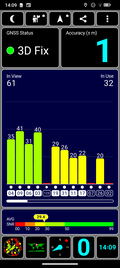








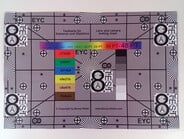




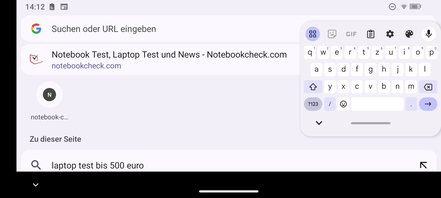


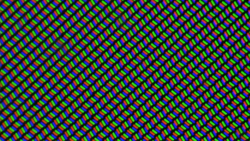




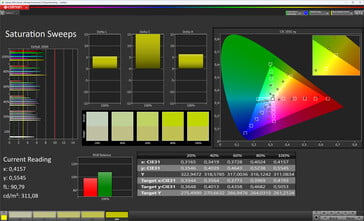







 Total Sustainability Score:
Total Sustainability Score: 







